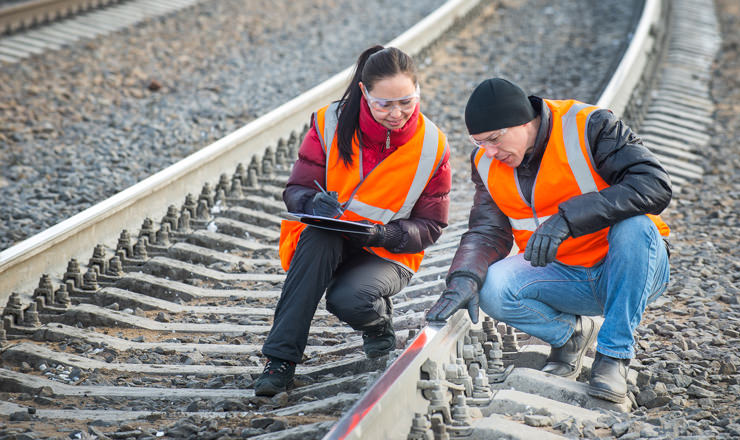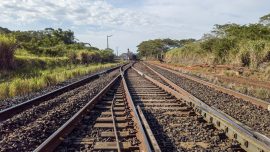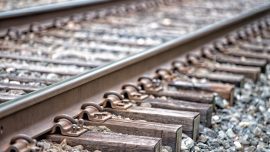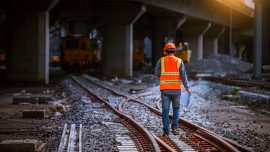
Railroad Track Maintenance and Rehabilitation
R&S Track, your Midwest railroad contractor, provides a number of rail services to the Midwest rail infrastructure. In fact, since 1987, we have been serving the railroad track maintenance and railroad construction needs of the Midwest.
The most critical component of any railroad, other than employees, is the infrastructure. In today’s post, we will be discussing the importance of maintenance and rehabilitation.
The Basics Of Railroad Track Maintenance & Rehabilitation
Railroad right of way infrastructure includes:
- Ballast
- Ties
- Track
- Bridges
- Tunnels
Railroad adjacent line side structures that include:
- Signs
- Mileposts
- Switches
In the late 1800s, the Granite Railway used early strap-iron rails that featured a wooden base atop thin iron strips for added strength. The concept was purely experimental, and developers learned on the fly. Engineers eventually determined that a dense, hardwood like oak proved the most economical. Today’s cross ties are at least 8 – 10 inches thick and about 8 – 10 feet long.
Today, a revolutionary design of an inverted capital “T” is placed on the ground providing a solid base while the narrow end is the wheels’ guide way. Later on, steel, a stronger, more durable material, replaced iron. Rail is an essential component of a balanced national transportation system and a globally competitive economy. Defining some terms is vital before getting started on railroad track maintenance and rehabilitation.
Here are some terms you may or may not be familiar with:
Gauge – A standard of measure or measurement.
Track Ballast – The track ballast is material, usually stones, that form the trackbed upon which the railroad ties are laid. It is packed below, between, and around the railroad ties to help water drain and prevent vegetation that might compromise the track’s stability.
Sleepers – A Sleeper is a load-distributing component of a track structure laid transversely to hold the rail. Sleepers are also called “Ties” because they tie the rails together.
Tamping – Packing the track ballast under railway tracks to make the track and roadbed durable and level.
Rail maintenance is a crucial component that ensures a safe and efficient track for freight and passenger trains. Rail is susceptible to wear and tear because of the heavy weight and high speeds the cars may reach.
The Main Types Of Rail Maintenance Or Rehabilitation Include
- Rail Grinding – This consists of grinding machines that travel along the track with grinding stones, which rotate or oscillate longitudinally to scrape the rail’s surface.
- Rail grinding is used to correct rail grooves, fatigue, metal flow, and rail reprofiling.
- Rail Replacement – This is necessary to upgrade the track to a higher gauge rail or replace the same gauge rail due to defects, wear, or derailment damage.
- Tamping – This is needed to correct the track’s longitudinal profile, cross-level, and alignment. A few sleepers at a time are lifted to the correct level with vibrating tamping tines inserted into the ballast.
- Track Stabilization – Track stabilizers vibrate the track in the lateral direction with a vertical load to give a controlled settlement. Tamping and compacting ballast underneath sleepers reduces lateral resistance of the track. Track stabilization can restore the lateral resistance to the original level.
- Ballast Injection (Stone Blowing) – Ballast injection or stone blowing is conducted to correct the longitudinal profile. The process introduces additional stones to the surface of the existing ballast bed while leaving the stable, compact ballast bed undisturbed.
- Sleeper Replacement – In almost all types of sleeper defects, the sleeper requires replacement. Bad sleepers can result in the rail losing the correct gauge, which can cause derailments.
R&S Track: A Midwest Railroad Contractor That Can Handle Your Rail Maintenance Requirements
Tracks age over time and take a beating with bigger carloads, shorter load time pressures, and larger locomotives.
R&S Track, your Midwest railroad contractor, can handle the maintenance and track rehabilitation necessary to keep your tracks safe and help you plan for future maintenance. We have the workforce, experience, and equipment required to manage and complete your unique project. Our team is serious when it comes to track maintenance and rehabilitation. Please take a look at the complete list of our services and reach out today to R&S Track, your Midwest railroad contractor, for more information about what we do, contact us today!




0 comments
Write a comment